Polish Fried Sauerkraut Recipe: Kapusta Zasmażana
This traditional Polish winter dish made with fresh cabbage or sauerkraut is heartwarming on its own, but also goes really well with meaty sides such as ribs and chops.
Sauerkraut, which is made by fermenting shredded cabbage, has been a staple food in Poland for centuries. The fermentation process helps to preserve the cabbage, making it an important source of vitamin C during the winter months when fresh produce was scarce.
The preparation of Polish fried sauerkraut typically involves sautéing the sauerkraut with onions, often in a big barrel. The dish is typically seasoned with spices such as caraway seeds, bay leaves, and black pepper.
The origins of kapusta zasmażana as a dish are not well-documented, but it’s believed to have developed by accident as a way to use up leftover sauerkraut.
Polish fried sauerkraut became particularly popular in the 19th century, when it was a staple dish in many households. It was often served as a main course, especially in the winter months, when hot and hearty meals were needed to keep warm.
Today, Polish fried sauerkraut is still a beloved dish in Poland and often served at family gatherings and holiday celebrations like Christmas. The recipe has evolved over time, with variations including the addition of meat (like for bigos), mushrooms, or different spices.
Despite these changes, the dish remains a classic example of Polish comfort food and a testament to the country’s culinary traditions.
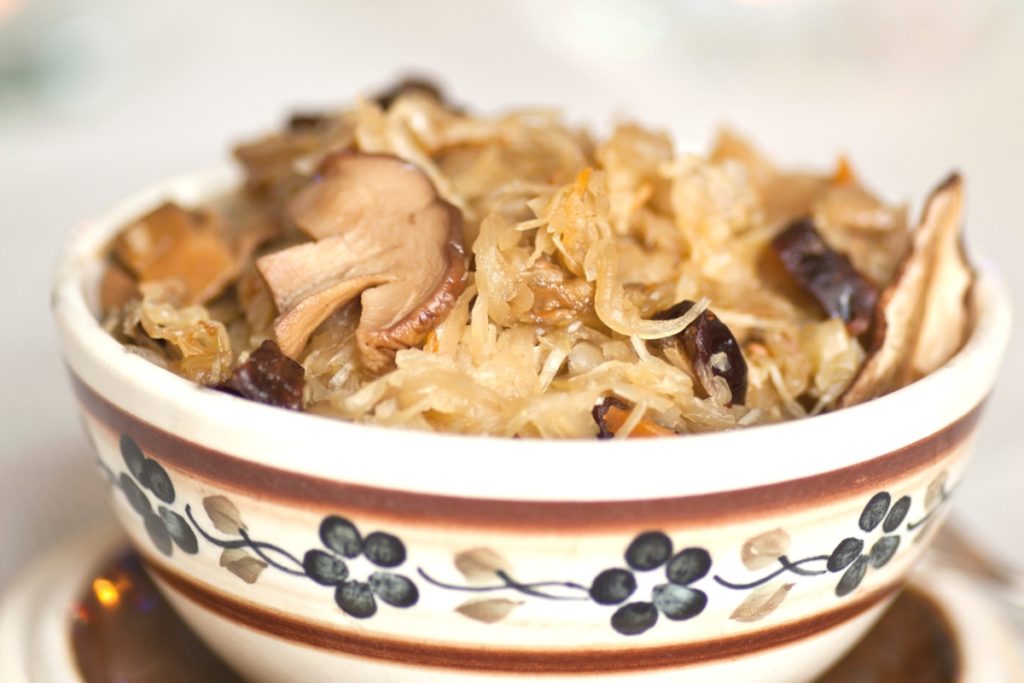
Pointers For Making Polish Fried Sauerkraut Recipe Recipe
- You may also hear some people call this dish kapusta kiszona zasmazana.
- You can replace vegetable oil with butter, but lard is perfect for a traditional taste.
- You can add finely diced carrots to the dish.
- Season with salt and pepper as desired.
- Fresh dill is a great addition to fried sauerkraut.
- Add more diced onions if you want it naturally sweeter.
- Serve with pork ribs or kotlety mielone and boiled potatoes.
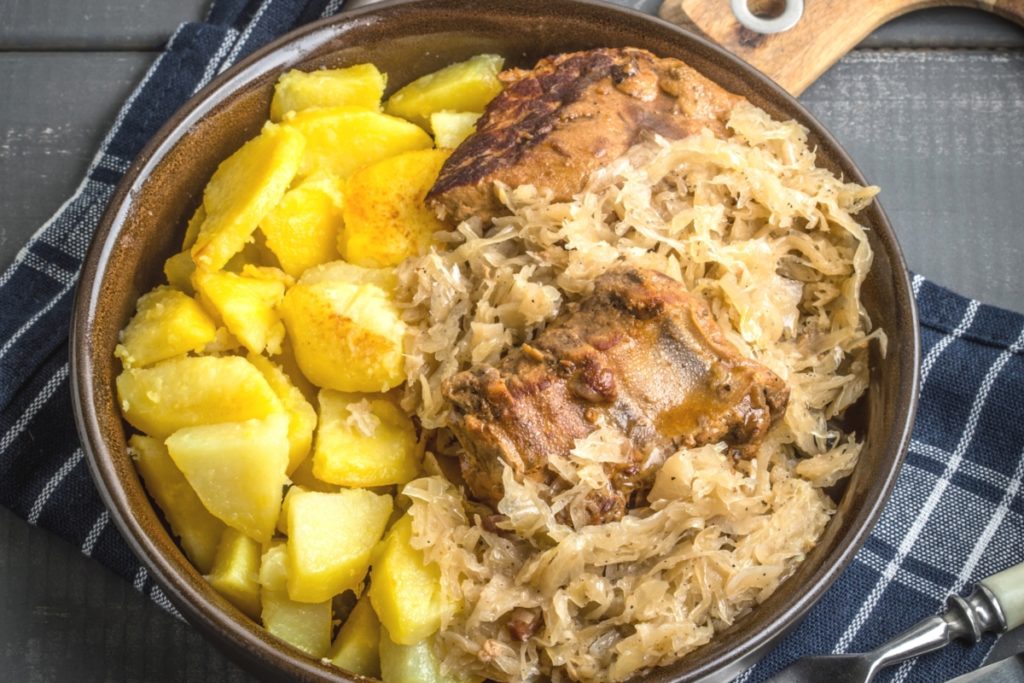
FAQs about Kapusta Zasmażana: Polish Fried Sauerkraut Recipe
How to pronounce kapusta zasmazana?
Kapusta zasmazana is pronounced kah-poohs-stah sahs-ma-zah-nah.
What is the difference between Kapusta Zasmazana and Kapusta Grzybami?
Kapusta grzybami is made with sauerkraut, while kapusta zasmazana ca be made with sauerkraut or fresh cabbage. Kapusta gryzbami is also made using mushrooms, while kapusta zasmazana is not.
What is the difference between Kapusta Zasmazana and Kapusta Kiszona?
Kapusta kiszona is the Polish name for sauerkraut. It’s made by fermenting finely chopped cabbages. On the other hand, kapusta zasmazana is a Polish dish made by frying the kapusta kiszona with other ingredients, that may or may not include mushrooms.
What to eat with the kapusta zasmazana?
Kapusta zasmazana goes well with any of the following dishes:
- Pork chops or pork ribs
- Kopytka dumplings
- Boiled or fried potatoes
- Potato pancakes
- Kielbasa sausages – grilled, fried, steamed, or boiled
- Fried pork rinds
- Toasted sourdough bread
- Kotlety mielone
Polish fried cabbage can also be eaten on its own. It’s simply delicious when topped with melted butter!
How long can I store Kapusta Zasmazana?
Kapusta zasmazana can be stored in the refrigerator in an airtight container for 3 to 4 days, or in the freezer for 3 to 4 months. Reheat before serving.
Polish Fried Sauerkraut Recipe: Kapusta Zasmażana
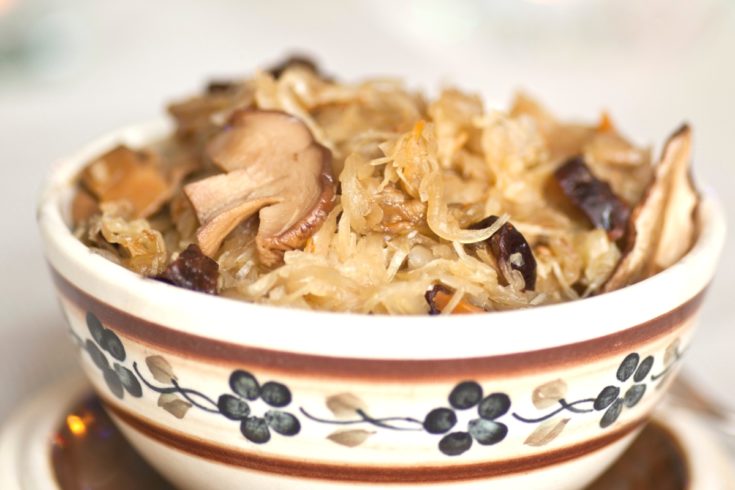
This traditional Polish winter dish made with fresh cabbage or sauerkraut is heartwarming on its own, but also goes really well with meaty sides such as ribs and chops.
Ingredients
- 2 lbs of sauerkraut
- 1 big onion
- 3 glasses of water
- 7 tbsp of vegetable oil or lard
- 3 tbsp of wheat flour
- 1 tbsp of sugar
- spices: 4 grains of allspice & 1 bay leaf, salt & pepper to taste
- 1 lbs of wild mushrooms (optional)
- 2 carrots - shredded (optional)
Instructions
- Rinse your sauerkraut in cold water and strain. If your sauerkraut still seems watery then squeeze the juices out of it and chop it a bit.
- Put sauerkraut along with 3 glasses of water into a pot with carrots, mushrooms, and all your spices: bay leaf and grains of allspice. Once it starts boiling, cover the pot and cook until soft for about 30 minutes.
- In the meantime, peel and dice the onions. Then brown the onions on a frying pan with oil or lard (about 10 minutes) with the sugar.
- Add flour to the pan and fry until brown (for about a minute).
- Slowly pour 1 cup of water from the pot with sauerkraut into a pan, stirring all the time and making sure there are no lumps.
- Drain the cooked sauerkraut and add it to the onion mixture, stirring all the time. Season with salt and pepper.
- Serve on its own, as a side, with sausages or ribs.


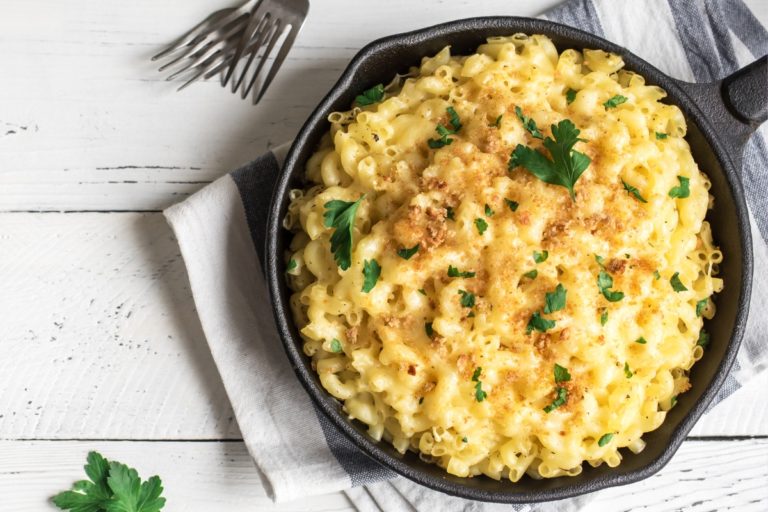



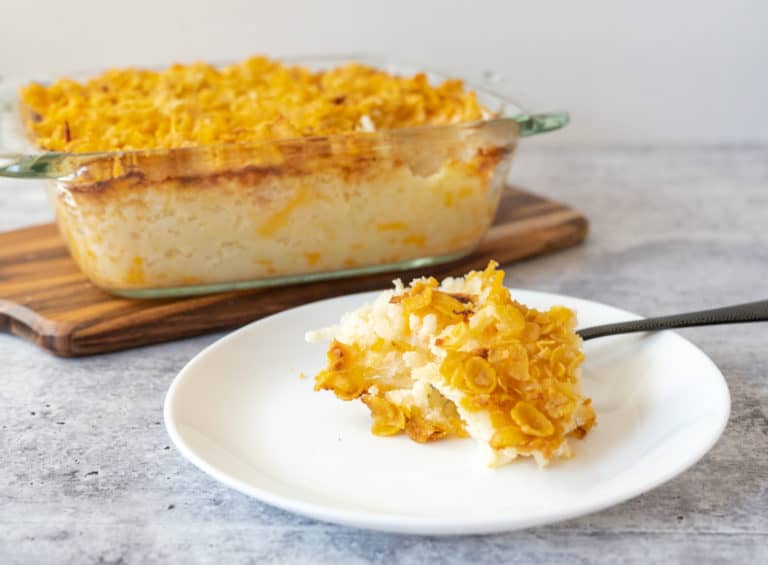


kapusty kiszonej nie powinno się przepłukiwać w wodzie, traci ona wszystkie właściwości zdrowotne. Gdy jest za kwaśna należy odcisnąć sok i kapustę do gotowania zalać wodą.